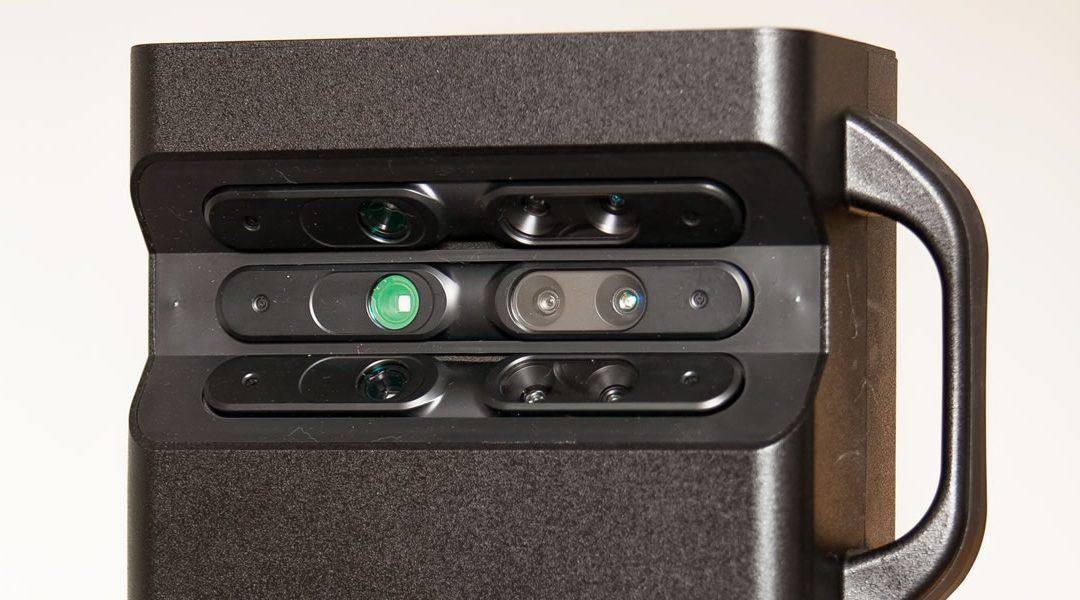There’s a new tool in town for real estate listings – 3D photography. The pictures taken by this camera are walk-through inspired video listing photos. Think Google Earth inside the home. Trying it out on one listing, you can walk around the kitchen, read magnets on the fridge, check out the pantry contents and then cruise smoothly down the hall to the bathroom, bedrooms and front entryway without leaving your desk. Want to see upstairs? Follow the lightly outlined circles with your mouse, click the view you want from the stairs and be on your way through the home.
Sara MacLennan, marketing director of Liv Real Estate in Edmonton, says, “For a seller this technology can significantly decrease the number of unsuccessful showings. It’s a real time saver for home buyers and sellers alike. Buyers can experience a home on their mobile device or computer and decide if it’s worth a look in person.”
Formatted differently than a standard digital photo, 3D photography must be hosted by a specialized site in order to be viewed. Liv Realty uses Matterport, a manufacturer of the cameras. To understand why people are so excited about the technology, a quick primer on what can and cannot be done with digital cameras:
Stereography has been called 3D digital photography. It is done using any camera and requires two photos of the same thing lined up close together. Viewed normally, they look like two photographs side-by-side, and like they are one picture with dimension when you look at them cross-eyed. But having to look at pictures of a listing cross-eyed is probably not a selling point.
3D consumer cameras will take a picture of an object close up. The quality is not as good as a computer-walkable house view that Matterport and other manufacturers can offer.
Cycloramic photos can be done using smartphone software and offer the chance to rotate the camera manually or on a small motor to get a 360-degree view of a room. They do not offer the option to seamlessly transition from far away to close up and to cross through doorways into other rooms.
As a trained photographer herself, MacLennan gives the Matterport camera thumbs up. “I tried it out, checked over the settings to see what it was capable of,” she says, “It’s not very hard to use. There is a subscription fee to have the pictures hosted on their site. We contract out to a photographer who takes approximately an hour and a half to shoot a listing. Then it can be uploaded to the site, and three hours or so later it’s ready to view.”
Controlled by tablet, the Matterport camera sits on a revolving base that gently spins. It calculates dimensions, colours, contours and spatial relationships of objects in the room. MacLennan says it will give the photographer feedback about the best place to set the camera in order to capture the largest possible perspective, and also to see if an area will need a re-take before the photographer leaves the house. Its special website hosting platform also serves as the software that stitches together all of the information obtained by the camera about an area, giving it a realistic look and feel, which doesn’t compare to other styles of photography.
The price for quality doesn’t come cheap, however. The company currently sells the Matterport 3D Pro for $4,500 plus shipping. Additionally, they do not ship to Canada. In order to obtain one, a buyer will need to find an importer to complete the transaction from purchase to customs to final delivery. MacLennan says it’s worth the price.
“We got a phenomenal response when we started putting our listings up in 3D,” she says. That trend has continued, and as an add-on feature for showcasing and selling a house, she believes that once enough people are able to see the results for themselves, it just might be the future of marketing technology in real estate listings.
Click here for a preview of 3D photography for real estate listings, or visit the Matterport website for more information.
Yvonne Dick is a contributing writer for REM with two decades of experience in journalism.


















